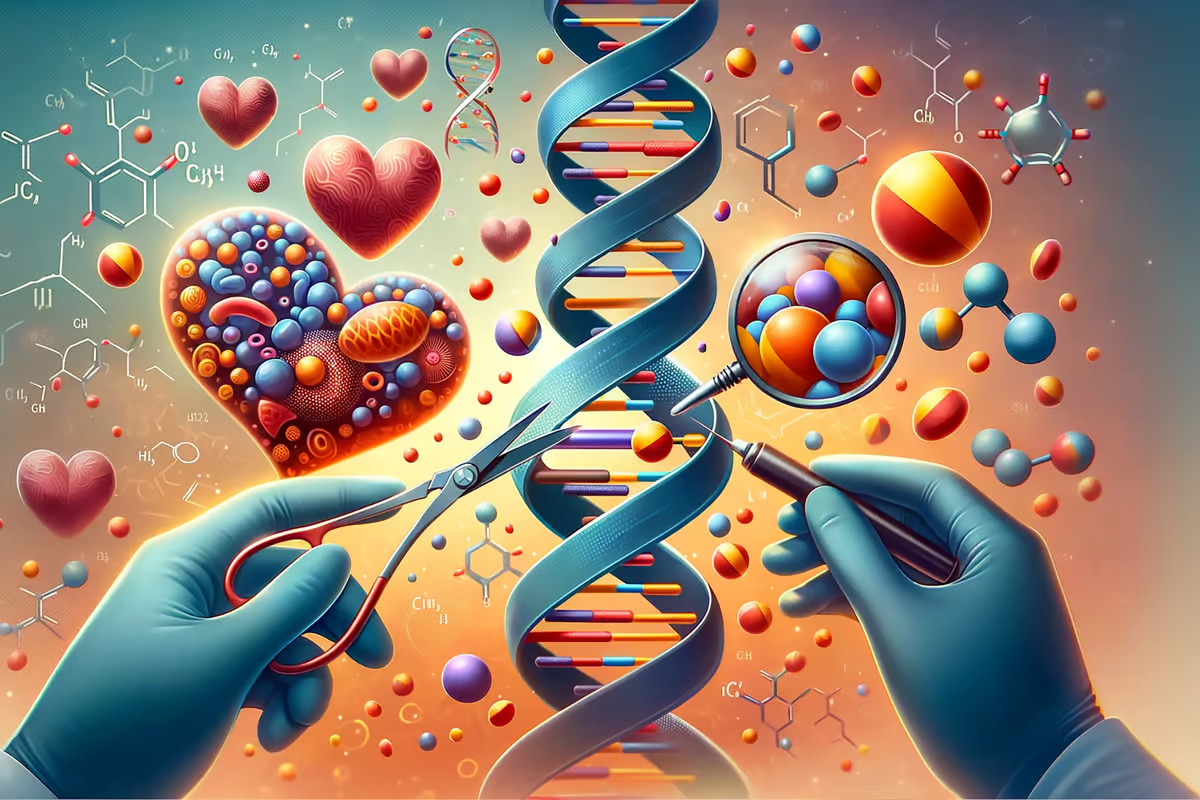 Epigenetic editing has been used to silence a cholesterol-regulating gene in mice. AI-generated by DALL-E –
Epigenetic editing has been used to silence a cholesterol-regulating gene in mice. AI-generated by DALL-E –
Because identical twins develop from a single fertilized egg, they have the same genome, the entire set of genetic material found in an organism. So, any differences between them, even in traits with a significant genetic component – say one develops heart disease and the other doesn’t – are due to their environments. This is known as epigenetics.
Genes in DNA are ‘expressed’ when they’re read and transcribed into RNA, which is then translated into proteins. It’s proteins that determine many of a cell’s characteristics and functions. Epigenetic changes can boost or silence the transcription of specific genes, ramping up or inhibiting associated protein production, but they don’t change the genome. These changes, which are reversible, can affect a person for their entire life and mediate a lifelong dialogue between genes and the environment.
In a new study, researchers from the IRCCS San Raffaele Scientific Institute in Milan, Italy, demonstrated a method of epigenetic editing that silenced the cholesterol-regulating gene in mice without changing the genome.
If you’d like an easy-to-understand primer on epigenetics, check out this TED-Ed video by Carlos Guerrero-Bosagna, an epigenetics researcher.
https://youtu.be/_aAhcNjmvhc
–
Using genome editing to make precise changes to DNA with technology like CRISPR – so-called ‘genetic scissors’ – is a promising way of treating diseases. However, there’s a chance that breaking the DNA will cause unintended outcomes, such as genetic mutations and off-target effects that disrupt the function or regulation of non-targeted genes. Epigenetic editing is an attractive alternative, modifying the chemical groups that decorate the DNA without changing the genome.
The researchers targeted the Pcsk9 gene, which provides instructions for making a protein, PCSK9, that helps regulate the amount of cholesterol in the bloodstream. PCSK9 controls the number of low-density lipoprotein (LDL or ‘bad’ cholesterol) receptors on cells, which bind to LDL to remove it from the blood. Inhibiting PCSK9 frees more receptors to clear away LDL cholesterol, lowering its levels. After screening for different DNA binding platforms, the researchers found that zinc-finger proteins were most efficient at silencing Pcsk9 in mice.
They used lipid nanoparticles (LNPs) to deliver the epigenetic editing machinery to the liver, where LDL cholesterol receptors are particularly abundant. One dose achieved silencing of Pcsk9, almost halving circulating levels of the PCSK9 protein for almost one year. ‘Epi-silencing’ inhibited up to 75% of Pcsk9, performing as well as conventional gene editing without causing potentially damaging DNA breaks to inactivate the desired gene.
The researchers say their proof-of-principle epigenetic silencing method opens exciting gene therapy possibilities and warrants further investigation.
The study was published in the journal Nature.
Source: IRCCS San Raffaele Scientific Institute via Scimex
–
























